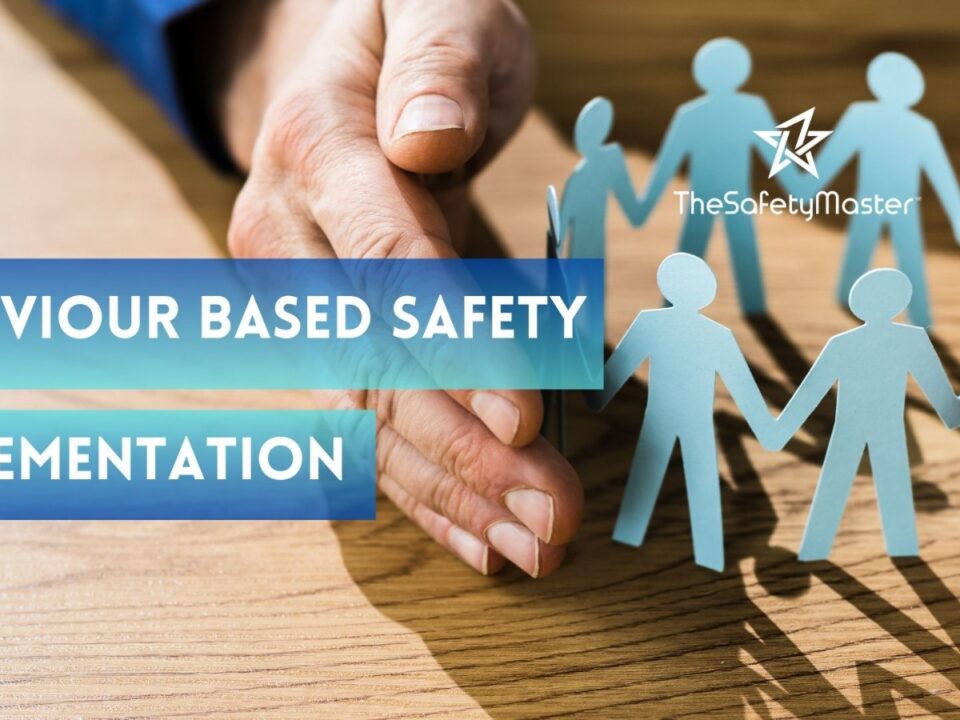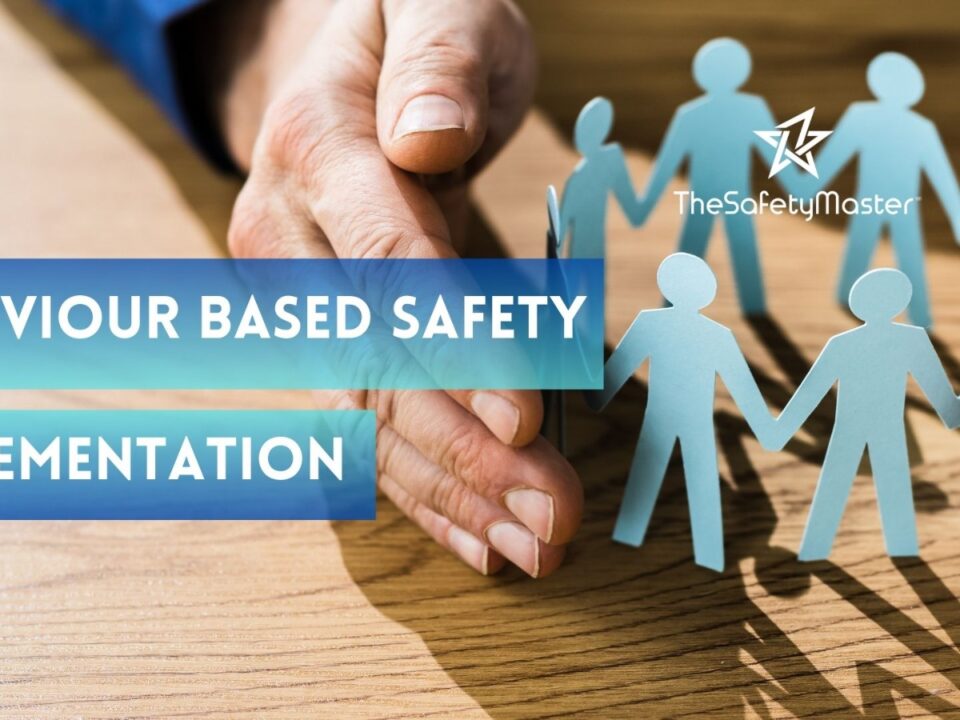Behavior Based Safety Training

The Importance of Electrical Safety Audits: Protecting Your Employees and Business
June 6, 2023
Scaffolding Erector and Inspector Training
June 7, 2023The Key Role of Behavior Based Safety Training in Preventing Workplace Accidents
In this article, we’ll explore the importance of behavior-based safety training in preventing workplace accidents. We all know that accidents can occur at any moment, turning a happy day into a tragedy. However, with proper training, we can prevent many accidents from happening, especially in the workplace. We’ll examine how behavior-based safety training can make a significant difference in improving safety culture and preventing accidents. By the end of this article, you’ll have a better understanding of how crucial it is to invest in behavior-based safety training for your workforce.
Introduction
Workplace safety is an essential aspect of any organization, yet accidents still occur despite the implementation of various safety measures. One of the main reasons for this is the failure to consider human behavior in the workplace. Ensuring that employees are not only aware of safe work practices but also motivated to follow them is key in preventing accidents.In this article, we will explore how behavior-based safety training can play a crucial role in reducing workplace accidents. We will discuss the benefits that employers and employees can expect from such training programs and highlight some key elements that should be included in any successful program. By the end of this article, you will have a better understanding of how behavior-based safety training can help keep your workplace safe and ultimately improve your bottom line
Importance of Workplace Safety
Ensuring workplace safety is a crucial aspect of any business operation. A safe working environment not only protects employees from harm but also helps to reduce the costs associated with accidents and injuries. When employees feel safe, they are more productive and motivated to work, leading to better business outcomes overall.Workplace safety involves identifying potential hazards and taking appropriate measures to mitigate risks. These can range from simple measures such as providing protective gear and ensuring proper ventilation to more complex strategies such as implementing behavior-based safety training programs. The importance of workplace safety cannot be overstated, as it affects not only the well-being of employees but also the reputation and success of the business itself.
Understanding Human Behavior in the Workplace:It is crucial to understand human behavior in the workplace when implementing a behavior based safety training program. The success of such a program relies on employees’ willingness to participate and their commitment to practicing safe behaviors. Therefore, it is essential to recognize that human behavior is not always rational or predictable.
Human behavior involves complex and often subconscious motivations that drive our actions. This complexity makes it necessary for managers to work closely with employees throughout the implementation of a safety training program. By understanding what motivates employees and how they perceive their work environment, managers can create an effective training program that fosters a culture of safety. Effective communication, recognition, and incentives can help reinforce positive behaviors and motivate employees to continue practicing safe habits both at work and at home.
The Role of Behavior Based Safety Training in Reducing Accidents:Behavior-based safety training is an effective way to reduce accidents in the workplace. This approach focuses on changing workers’ behaviors and attitudes towards safety, rather than just relying on rules and regulations. By addressing the root causes of accidents, behavior-based safety training can help prevent them before they occur.
One of the key benefits of behavior-based safety training is that it encourages employees to take ownership of their own safety. Instead of simply following procedures, workers are encouraged to actively identify and report hazards, as well as suggesting improvements to their work environment. This leads to a workplace culture where everyone is invested in creating a safe working environment.
Additionally, behavior-based safety training can lead to significant reductions in accident rates. By addressing human factors such as complacency and risk-taking behavior, workers are more likely to take precautions and follow safe work practices. Over time, this can lead to a reduction in incidents and injuries, resulting in cost savings for employers while also improving the overall well-being of employees.
The Top Benefits of Behavior Based Safety Training for Employers:One of the most significant benefits of behavior-based safety training is that it helps employers create a safer workplace for their employees. With increased awareness and effective training, employees are less likely to engage in unsafe behaviors that can lead to accidents and injuries.
Another benefit of behavior-based safety training is improved productivity. When employees feel safe and secure in their work environment, they are more committed and motivated to perform their job duties effectively. This results in higher levels of productivity, higher quality work output, and improved company performance overall.
In addition to reducing the number of workplace accidents and boosting productivity levels, behavior-based safety training can also help employers save money on workers’ compensation claims. By implementing effective safety programs, companies can reduce the number of insurance claims filed by injured employees, resulting in lower costs for workers’ compensation insurance policies.
The Top Benefits of Behavior Based Safety Training for Employees:Behavior Based Safety Training is not only beneficial to the employer, but also to the employees. One of the top benefits of this type of training is improved job satisfaction, which ultimately leads to a more productive team. When employees feel that their safety is being taken seriously and that their employer cares about their wellbeing, they are more likely to be invested in their work and perform at a higher level.
Another benefit of Behavior Based Safety Training for employees is increased confidence in their ability to perform tasks safely. This type of training provides employees with the knowledge and skills needed to identify potential hazards and take appropriate measures to prevent accidents from occurring. As a result, employees feel more confident in their ability to do their job without risking injury or causing harm to themselves or others.
Finally, implementing Behavior Based Safety Training can lead to a decrease in employee turnover rates. When employees feel valued and cared for by their employer, they are less likely to seek employment elsewhere. This can ultimately save companies time and money that would otherwise be spent on hiring and training new staff members. Overall, implementing http://www.thesafetymaster.com/Behavior Based Safety Training has numerous benefits for both employers and employees alike.
Key Elements of a Behavior Based Safety Training Program
Behavior based safety training programs are designed to instill safe habits and practices in employees. This involves a combination of classroom instruction, hands-on training, and reinforcement through positive feedback. The first step in developing a successful program is to identify potential hazards within the workplace and assess the risks associated with each one.Once these risks have been identified, specific training materials can be developed to address them. For example, if an employee is working on a construction site where there is a risk of fall accidents, they will receive specialized training on how to use safety harnesses and ladders correctly. Additionally, behavior based safety programs must include regular monitoring and evaluation to ensure that employees are consistently following safe practices.
The most effective behavior based safety training programs are ones that involve employees at all levels of the organization. This means that everyone from entry-level workers to top-level management is required to participate in the program. By involving everyone in the process, it helps create a culture of safety within the workplace where everyone is accountable for their own actions and those around them. When done correctly, these types of programs can significantly reduce workplace accidents and injuries while also improving morale among staff members.
Conclusion
In conclusion, behavior based safety training is an essential aspect of creating a safe and productive workplace. By understanding the human behavior that leads to accidents, employers can develop effective training programs that will reduce the risk of accidents. Employees benefit from this training by gaining knowledge and skills that help them avoid accidents and improve their safety on the job. With the proper implementation of a behavior based safety training program, both employers and employees can experience a safer workplace environment. By prioritizing safety through such programs, companies can also improve productivity, reduce absenteeism and worker’s compensation claims, as well as boost employee morale. So let us strive for a safe work environment by investing in behavior-based safety training programs.
At TSM TheSafetyMaster Private Limited we offer following services
TSM TheSafetyMaster® Private Limited
Unit No 221-451-452, SPL1/J, 2nd & 4th Floor, Sunsquare Plaza Complex, RIICO Chowk, Bhiwadi 301019, Rajasthan, India
Phone: +91 1493 22 0093
Mobile: +91 7665231743/9413882016
Email: info@thesafetymaster.com




